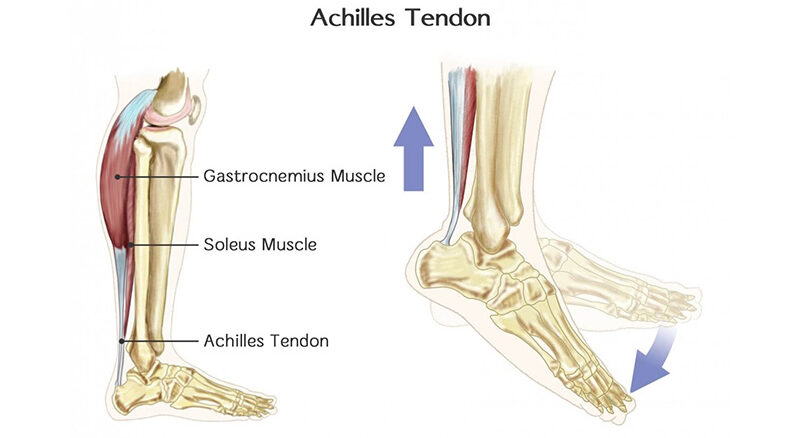The Achilles tendon is a stiff band of tissue that joints the calf muscle to the heel bone. But if the Achilles tendon is under severe pressure such as a sudden begin or stop, or even if falling down, Achilles tendon rupture might happen. As a matter of fact, this foot condition is common among athletes. Fortunately, the best treatment for Achilles tendon rupture is rest and bracing, but in serious conditions many patients need surgery to fix it. In general in order to diagnose and determine the best type of treatment, visiting a heel surgeon in Dubai is required.
What is the Achilles tendon?
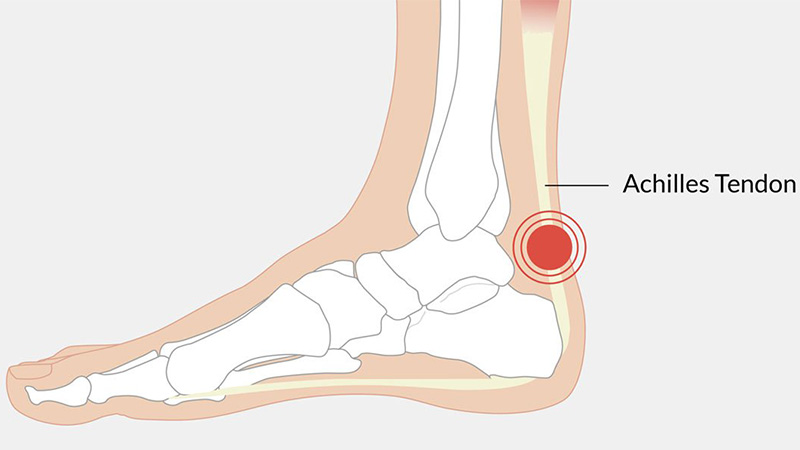
As it mentioned above, a tendon is a thick group of tissue which links a muscle to a bone. The Achilles tendon, known as the heel cord, runs over the back of the lower leg and attaches the calf muscle (the muscular back part of a leg under the knee) to the heel bone. In fact, the Achilles tendon is the biggest and longest tendon in the body and is made to handle a lot of pressure and stress. The Achilles tendon makes walking easy by helping to lift the heel off the ground.
√Read more: Restless Legs Syndrome and Its Symptoms
Achilles tendon rupture
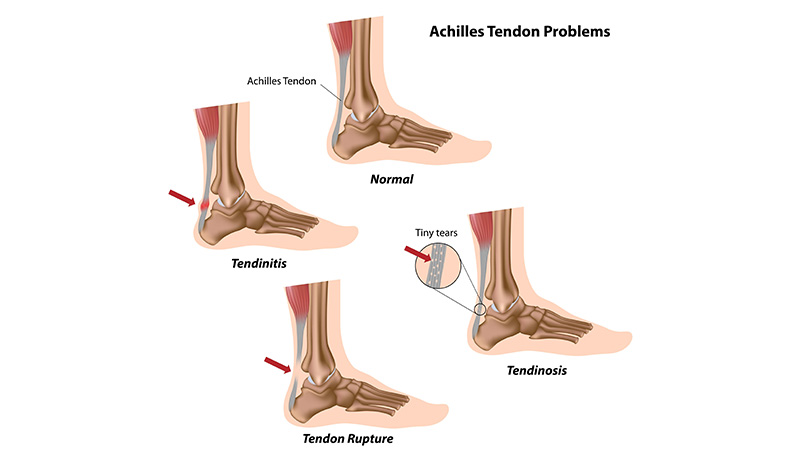
The Achilles tendon is very strong. As a matter of fact the Achilles tendon makes the leg strength to walk, jog, run and jump.
An Achilles tendon rupture happens when this strong tissue tears completely or partially. In other words, this intensive and sudden injury happens when the tendon stretches to its repturing point. It occurs most commonly while playing sports. Slipping, falling down or twisting the ankle may also lead to an Achilles tear.
Achilles tendon tearing is a very common sports harm. It usually happens in people with an average age of 30 to 40 and is more common in male than in females.
In addition, people who don’t exercise regularly, known as “weekend warriors”, are more likely to break an Achilles tendon than younger people and athletes.
A ruptured Achilles tendon is a traumatic damage that entails medical attention. If the treatment of Achilles tendon rupture is ignored, an Achilles tendon rupture will not heal properly. This may enhance the risk of rupturing it again and again.
Note: If this condition occurs, it’s recommended to visit a foot surgeon in Dubai to examine and treat it.
√Read more: What is osteoporosis and what can you do to prevent it?
Symptoms of Achilles tendon rupture

The usual symptoms of a torn Achilles tendon is feeling and attending a crack or snap at the back of the ankle. People with this condition usually unintentionally think something has hit them, but they’re indeed feeling the tendon snap.
Other common signs are:
- Feeling keen, sudden pain in the back of the ankle close to the heel.
- Observing swelling and bruising in the back of the ankle.
- Feeling ache while walking, particularly upstairs or uphill.
- Being sensitive in the spot where the tendon is ruptured.
These signs require immediate medical attention in order to prevent further damage. Until the patient sees a doctor, the RICE approach should be used. RICE approach involves:
- Rest. Do not get on the injured foot and ankle. Because walking may cause pain or more damage.
- Ice. Put a pack of ice covered with a thin towel to decrease swelling and ache. Do not get ice directly on the skin.
- Compression. Tie up the foot and ankle in a reactionary bandage to prevent more swelling.
- Elevation. Hold the leg elevated to decrease the swelling.
Causes of Achilles Tendon Injury
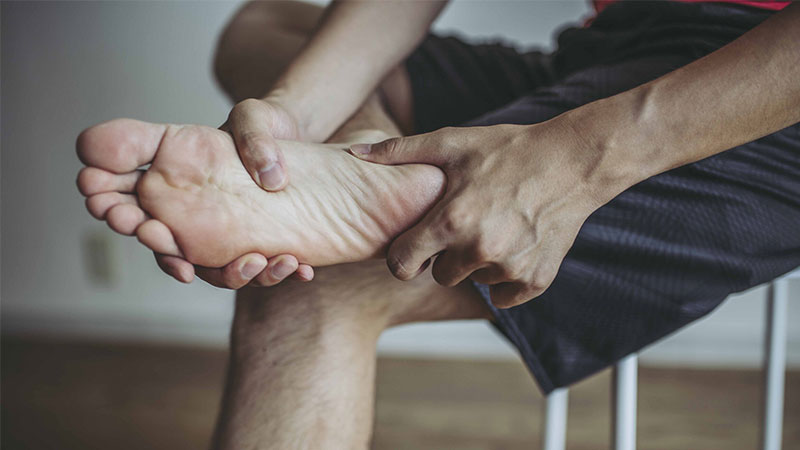
Sudden motion that puts pressure on the Achilles tendon can lead to a rupture. Specifically, the Achilles tendon tears while doing exercise and playing sports. The main culprits are sports owing to sudden stops, starts and pivots like soccer, basketball, squash or tennis. Despite it, Achilles tendon tears don’t happen because of sports injury. It can occur because of tripping, missing a step while walking downstairs or incidentally stepping into a hole and twisting the ankle. Some medicines such antibiotics and steroid injections in the injured area could weaken and waste the Achilles tendon. This might put people at a higher risk for a break.
Note: However prevention of an accidental injury such as tearing the Achilles tendon is not possible all the time. But by taking some steps you can reduce the risk of an Achilles tendon rupture:
- Warming up before a workout or game.
- Enhancing the extreme of workouts gradually.
- Regularly pulling the calf muscles and Achilles tendons.
Treatment of Achilles tendon rupture
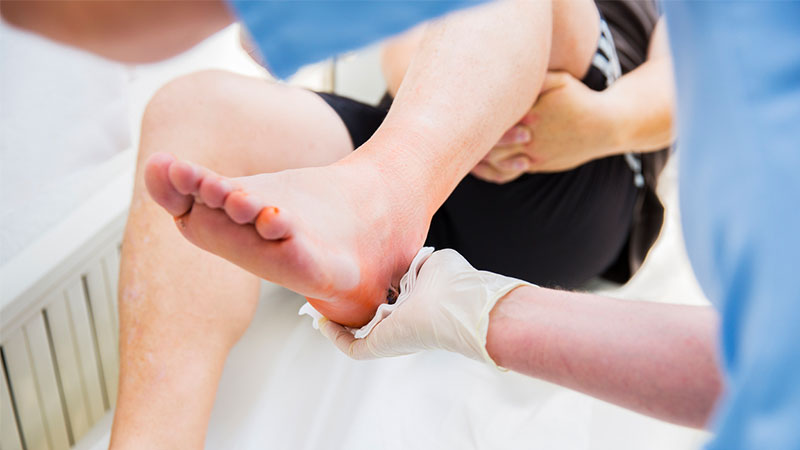
The healthcare provider physically checks the injured foot and ankle and capability to move it in different directions in order to see how the patients react to pressure on the area. The healthcare provider may also apply imaging tests like ultrasound or MRI to define the extent of the Achilles tear.
After diagnosis, the best treatment will be recommended.
Full curing of a ruptured Achilles tendon normally takes about 4 to 6 months. Medical treatment for this condition include:
Brace or walking cast: Nonsurgical approaches for a ruptured Achilles tendon needs immobilising the injured/harmed foot and ankle. Your healthcare provider will put the injured foot, ankle and calf in a walking cast or brace. So the foot and ankle bend downward and the injured part can heal.
Surgery: Most healthcare providers and doctors suggest surgical treatment of a torn Achilles tendon in patients who are active and middle aged or younger. During the process of surgery, a surgeon sutures the two ends of the ruptured tendon back together. After surgery, patients require a cast on the lower leg to immobilise the tendon while it cures.
Physical therapy: Doing physical therapy leads to regain strength and mobility back in the Achilles tendon, even if you didn’t have surgery.
Note: Before seeking medical help, it’s better to reduce ache and swelling to the damaged tendon by doing the RICE method.
√Read more: What is iliotibial band syndrome and what are its symptoms
Conclusion
Achilles tendon rupture is a severe condition that, with proper treatment, will heal completely during four to six months. Most of the time surgery is the best treatment for younger and active people. After surgery, patients can regain their Achilles tendon’s full strength.
Thus if you experiment with a snap or crack at the back of the ankle while doing activity, feel a sudden sharp ache at the back of the ankle or have trouble while walking after an injury; you should see a doctor.


